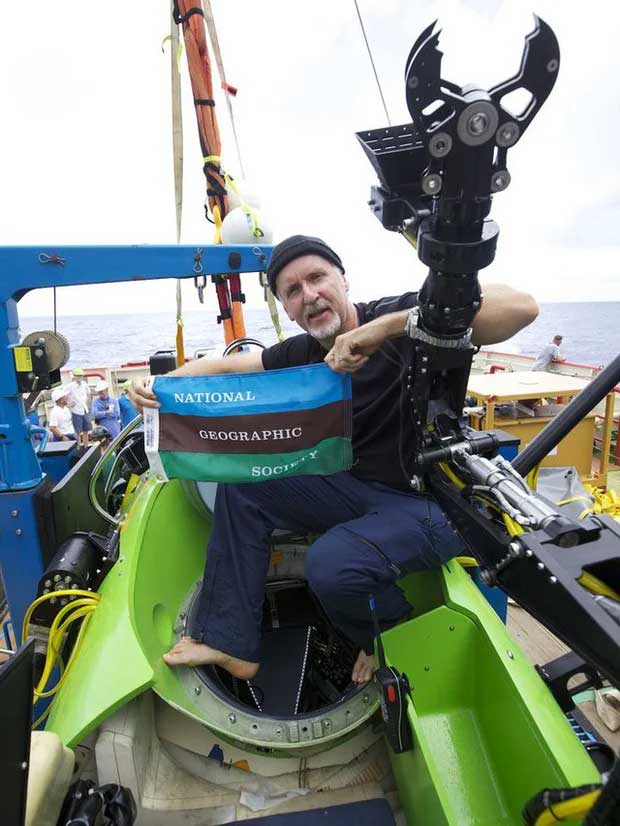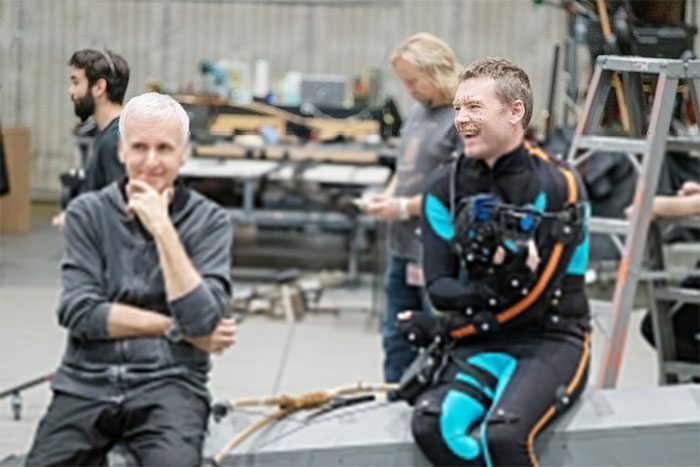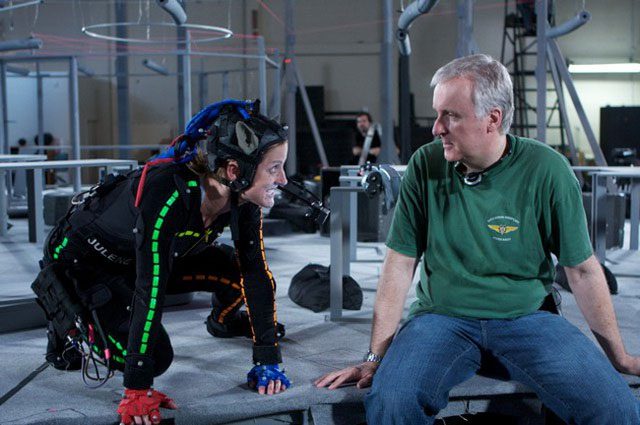Director James Cameron and screenwriter Jon Landau share behind-the-scenes stories about the making of the blockbuster film Avatar: The Way of Water.
One week after its official global release, the blockbuster Avatar: The Way of Water has grossed $555 million at the worldwide box office (according to Box Office Mojo). This figure means that the $400 million film has made a 25% progress towards the $2 billion mark—break-even and profit according to James Cameron’s calculations. The future of The Way of Water at the box office remains bright with the Christmas and New Year holiday season approaching.
Impressive achievements of the blockbuster Avatar 2: Achieving $100 million in record time, featuring a beauty breaking Tom Cruise’s record.
Avatar: The Way of Water is both a sequel to Avatar (2009) and a blockbuster that opens a new era on screen for this franchise. True to expectations, The Way of Water has captivated mainstream audiences. Besides the love and admiration, viewers are also very curious about the behind-the-scenes stories of the film: How many years did James Cameron spend developing his ideas? What obstacles did he and his team face, and what significance do the characters and storylines hold?…
Diving 10km into the Ocean for Inspiration
According to IndieWire, James Cameron spent two years in Australia helping to design a special diving device called Deepsea Challenger. This device allowed the filmmaker to dive more than 10km below sea level with a 3D camera, exploring the deepest places in the Mariana Trench. According to Cameron, the ocean exploration trip in March 2012 helped him accumulate a wealth of knowledge and experience for Avatar: The Way of Water. “I am very meticulous in my preparation,” Cameron said.
While developing ideas for the Avatar sequel series, James Cameron and Jon Landau also produced another big-budget film project, Alita: Battle Angel (2019) with director Robert Rodriguez. Although it failed at the box office, Alita: Battle Angel is still mentioned by Cameron and Landau as a learning experience that served the making of the later Avatar films.

Director James Cameron beside the diving device Deepsea Challenger that he helped build (Photo: NatGeo)
During the pre-production phase for Avatar, James Cameron and 20th Century Fox (now renamed 20th Century Studios after being acquired by Disney) had intense debates about whether to cut or keep the scene where Jake (Sam Worthington) and Neytiri (Zoe Saldana) wander through the forest at night in the ethereal glow of bioluminescence. The studio insisted on cutting it, but the filmmaker was determined to keep it. As a result, this scene became one of the most memorable moments of the work.
In The Way of Water, even though 90% of the film takes place in coastal regions, James Cameron still allocated time to take audiences back to the forests of Pandora at night, but under a new light. “We didn’t recreate the mystical night scenery in the new film because the situation is very tense, the kids are kidnapped, and two factions are confronting each other in the forest. We allowed it to rain, added a bit of bioluminescence—a hallmark of this land. But we didn’t want everything to be too beautiful. We wanted to save the astonishment for the audience as they begin to explore the new world,” Cameron shared.
![]()
![]()
The rescue of the Sully children is the climax of Part I of Avatar: The Way of Water. (Photo: Disney)
Director “Embodies” the Characters
In an interview with IndieWire, James Cameron revealed that he built a large team of screenwriters to help him brainstorm ideas for the Avatar sequels. This team worked with Cameron to develop the storyline for three films based on 1,500 pages of notes compiled over a year. From this storyline, they spent another four years to produce a complete script before filming for the first sequel began in 2017.
In Avatar: The Way of Water, Jake’s parenting style is somewhat militaristic and rigid. As a result, he often finds himself in embarrassing situations because of his children, and his fatherly love is somewhat diminished. In an interview, Cameron shared that he drew from his own experiences as a father, including both the sweet moments and the regrettable mistakes, to write about this character’s experience as a father.
![]()
![]()
Jake Sully’s journey as a father is not easy. (Photo: 20th Century Studios)
However, Jake is not the only character that James Cameron has infused with part of his personality. “I am also Kiri, I am in Lo’ak. I remember my memories as a dreamy child, rich in creativity and misunderstood by my authoritarian father, who had the mind of an engineer. I don’t blame my father; he raised and sheltered us. He was a great father, but he still couldn’t fully understand his children,” the filmmaker expressed. He noted that he has a part of himself in every character, emphasizing that “Every screenwriter has life experiences that resonate with the characters they create.”
James Cameron’s film career is closely associated with strong female characters on screen. In other words, his classic film franchises revolve around resilient women, even though there have been times when this motif strayed from mainstream tastes. With Avatar: The Way of Water, the script’s portrayal of the two mothers Neytiri and Ronal (Kate Winslet) has received audience acclaim. They are fierce and combative but always exemplify nurturing figures for their young offspring.
![]()
![]()
Neytiri (above) and Ronal (below), two characters exemplifying James Cameron’s strong female character construction. (Photo: Disney)
The Mastery of James Cameron
Avatar: The Way of Water began production in 2017, but it wasn’t until 2022 that it finally hit theaters. This prolonged wait led to a humorous situation when actress Edie Falco—who plays the human general Ardmore—mistakenly thought the film was released quietly and failed. Her comments to the media left Avatar fans both amused and bewildered.
Before The Way of Water premiered, the press frequently reported on the advanced underwater filming technologies used in the film. However, the public was more impressed with the fact that the cast had to spend time learning how to hold their breath for underwater filming. Additionally, they had to perform action scenes while wearing cumbersome motion capture devices. Actress Kate Winslet even threatened to break a record set by Tom Cruise when she held her breath underwater for 7 minutes and 15 seconds.


James Cameron directing on the set of Avatar 2. (Photo: Disney)
The reason fans had to wait so long to see Avatar: The Way of Water in theaters partly stems from the global outbreak of the Covid-19 pandemic. However, the larger reason still comes from the meticulousness and perfectionism of director James Cameron. In an era of CGI and green screens, the filmmaker, along with his collaborators and cast, still dedicated themselves to creating the most realistic footage for audiences, even though the vast majority of scenes were made using computer technology.
“There are very few scenes that are 100% real in the film. So whenever we shoot scenes with human characters—like Spider played by Jack Champion or the Tulkun hunting party—they must be real shots; of course, we also used many common techniques like green screens to expand the context and combine real people with digital characters. We strive to make 80% of the computer-generated scenes look as realistic as the live-action shots on set,” James Cameron shared.
![]()
![]()
Spider and Kiri are two characters with special destinies, reminiscent of the director’s own childhood. (Photo: Disney)
Speaking about the underwater world in the film, the challenge set for the director and the film crew was to create a realistic, vibrant space that gives viewers the feeling of truly sinking beneath the ocean. “There are no tools or automated machinery that can create that experience. It requires the sensitivity of an artist; every artist, even with advanced tools, must understand the flow of water, its stillness, and its meditative quality. This process consumed us for many years and 10 million USD to build everything from scratch. But that investment was well worth it.“
Audiences watching Avatar: The Way of Water expressed surprise upon learning that the 14-year-old character Kiri is portrayed by actress Sigourney Weaver, who is approaching 70 years old (at the time of filming). This could only happen with the aid of motion capture technology, which has played a significant role in bringing the vibrant Na’vi characters to life on screen.
Regarding this decision, James Cameron shared: “With this technology, we can think about the possibility of an actor playing a character of any age, gender, or ethnicity, right? Sigourney, at 69, could portray a character that is only one-fifth her actual age.” He believes this can greatly assist actresses who are at a certain age.


















































